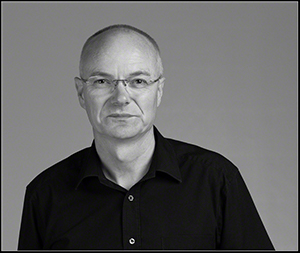
I was first licensed back in the late 1980’s and used the ‘B’ class callsign G1SWW. Back then the UK had two license classes. An ‘A’ and a ‘B’ license. The former was the Full license class and required successful completion of a 12wpm Morse test. The latter class was identical, however, the holder was not permitted to transmit in the RF spectrum below 70MHz although this did change in later years to 30MHz.
For the first few years until I learnt Morse, passed the test and received my full license I operated on the 2m VHF and 70cms UHF bands. Where I was living had enough space for a small telescopic, winch operated mast on top of which I mounted crossed Yagi antenna’s from Tonna and, sticking with convention, used vertical polarisation for FM and horizontal for SSB voice. Living where I did in South East England not far from Guildford meant I was not too far from our the border with mainland Europe. Back then VHF and UHF where busier and my contacts were across the UK and into Europe using tropospheric and other forms of enhanced propagation. It was in those years that I discovered the wonderful world of satellite communications and reorganised the antenna’s for circular polarisation and introduced an elevation rotator to permit tracking of satellites such as Oscar 10, 12 and the Fuji series.
With hindsight, that two-class license model may have been a clever and very beneficial construct as it constrained my early activities and forced me to focus my energies on a part of the spectrum that was technically challenging and very rewarding. It was pretty easy to create moderately high gain, efficient antenna systems at VHF, thus I learned a lot. This just would not have occurred if I’d started out on HF; there is no way I could have erected a 9+ element Yagi antenna system!
Antarctic operations
During late 1990 through to 1992 I worked in Antarctica as communications manager at Halley 5 research station. Although the base had its own callsign (VP8HAL) I stopped in the Falkland islands on the way down and collected my own call: VP8CES. The UK’s two-class license model did not apply and thus I was able to use HF for the first time and cause quite a few pile-ups as I recall 😉
Operating in Antarctica had its unique challenges and I learnt a lot about how the ionosphere can impact HF and satellite communications. Two challenges worth highlighting are (a) There was no electrical ground as the station was located on a floating ice shelf albeit a thick one so electromagnetic interference could be a big problem; (b) coax could become so brittle in the cold that it could fracture if it was allowed to flex in the often windy conditions.
The commercial link back to the UK used Inmarsat satellite communications but the satellites where 5 degrees above the horizon, so it didn’t take much of a storm, atmospheric or terrestrial, to knock-out that form of communication too!
Good things about operating in Antarctica was space for antenna’s was limitless, there was no planning permission and as we where on a thick ice shelf, floating on sea water, electrical ground (the sea water), was tens of metres beneath us. Thus, as far as antennas were concerned, just a few metres above the surface ice/snow was the equivalent of being tens of metres above ground elsewhere in the world!
The last two and a bit decades!
On returning to the UK in 1992, I had learnt Morse, so took the test, getting my full license in 1993 and the callsign G0RVM.
Around that time the entire world was transforming from analogue to digital communications and IT systems. So, my career which had originally started in software development followed the trend and using a hybrid of radio and IT skills I moved towards computer networking, digital communications and more software development; area’s which I thoroughly enjoyed and which kept me busy for the remainder of my professional career.
During those years I’ve developed software applications in C, C++ and x86 Assembler for Linux and Windows. More recently I’ve started coding in Swift, SwiftUI and SwiftData for Apple Mac platforms with SPE Expert Controller for macOS being the result.